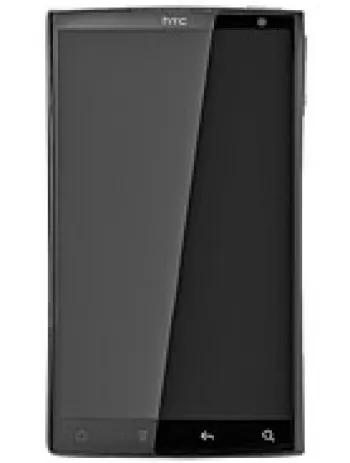
Overview of HTC Butterfly
The HTC Butterfly, released in early 2013, marked a significant entry for HTC in the world of high-resolution smartphones. Launched under several names globally, including HTC Droid DNA in the US, it quickly gained attention for its impressive display and robust performance capabilities. This smartphone model allowed HTC to cement its position in the competitive market of smart devices by offering unique features that were ahead of its time.
Design and Build
With dimensions measuring 143 x 70.5 x 9.1 mm and weighing 140 grams, the HTC Butterfly strikes a balance between a solid build and ergonomic design. It features a polycarbonate body, providing durability and a premium feel. The micro-SIM slot adds to the convenience of users who prefer compact and hassle-free design elements.
Display
One of the standout features of the HTC Butterfly is its remarkable 5-inch Super LCD3 display. With a resolution of 1080 x 1920 pixels and approximately 441 ppi pixel density, the screen offers vibrant colors and exceptional clarity. The inclusion of Corning Gorilla Glass 2 provides an additional layer of protection against scratches and minor impacts, making it sturdy for everyday use.
Platform and Performance
The HTC Butterfly runs on Android 4.1.1 (Jelly Bean), upgradable to 4.4.2 (KitKat), with the custom Sense UI 5 skin on top for an enhanced user experience. It is powered by the Qualcomm APQ8064 Snapdragon 600 chipset, featuring a quad-core 1.5 GHz Krait CPU and an Adreno 320 GPU. This combination ensures a swift and smooth performance, capable of handling multitasking and demanding applications with ease.
Memory and Storage
This device comes equipped with 2GB of RAM, which complements the processor well, allowing for efficient multitasking. The internal storage is set at 16GB, with approximately 11GB available to the user. Furthermore, the HTC Butterfly includes a dedicated microSDHC slot, enabling users to expand storage as per their requirements, which is a significant advantage for those who require additional space for media and applications.
Camera Capabilities
The HTC Butterfly boasts an 8MP rear camera with autofocus, LED flash, and HDR capabilities, catering to photography enthusiasts with features that capture images with good detail and clarity. The camera can record 1080p videos at 30fps, complete with stereo sound recording, adding to its multimedia prowess. The front-facing camera, meanwhile, is a 2.1MP shooter, also capable of recording 1080p video, making it suitable for video calls and selfies.
Audio and Sound
For audiophiles, the HTC Butterfly includes a 3.5mm headphone jack and stereo loudspeakers. The audio output is supported by enhanced features that provide rich sound quality, making the device suitable for listening to music, watching videos, and gaming. Additionally, the built-in stereo FM radio with RDS adds to the media capabilities of the smartphone.
Connectivity and Communication
Connectivity options on the HTC Butterfly are comprehensive. The device supports Wi-Fi 802.11 a/b/g/n with Wi-Fi Direct, DLNA, and the capability to act as a hotspot. Bluetooth 4.0 with A2DP and aptX ensures smooth file transfer and connectivity with other devices. The smartphone also includes GPS and GLONASS for precise location tracking, and certain market models come with NFC capabilities. The availability of microUSB 2.0 with MHL TV-out allows connection to larger screens for media consumption.
Sensors and Additional Features
Incorporating a range of sensors, the HTC Butterfly includes an accelerometer, gyro, proximity, and compass. These sensors enhance the device's functionality by supporting various applications, from simple gaming to complex navigation tasks. The smartphone is also equipped with NFC support in certain markets, allowing for contactless payments and wireless data transfers.
Battery Life
The HTC Butterfly is powered by a non-removable Li-Po 2020 mAh battery. While this battery size may seem modest by today's standards, it was deemed adequate at the time of the device's launch. The phone's endurance rating stands at approximately 45 hours, making it average in terms of talk time and usage. However, for moderate users, the battery can last through most of a day with typical activities like browsing, calling, and light gaming.
Final Thoughts
Overall, the HTC Butterfly offered an impressive set of features for its time, marking a notable advancement in smartphone technology. Its high-resolution display, sturdy design, and admirable performance made it a favorite among many users. Despite the fact that it has been discontinued, the HTC Butterfly remains a testament to the brand's innovation in the mobile technology arena.
Key Features of HTC Butterfly
- Network Technology: Supports GSM, HSPA, and LTE
- Display: 5.0 inches Super LCD3, 1080 x 1920 pixels resolution, Corning Gorilla Glass 2 protection
- Platform: Android OS upgradable to 4.4.2 (KitKat), with Sense UI 5
- Processor: Quad-core 1.5 GHz Krait, Qualcomm Snapdragon 600 chipset
- Memory: 16GB internal storage with 2GB RAM and expandable microSDHC slot
- Main Camera: 8 MP with LED flash and HDR, 1080p video recording
- Selfie Camera: 2.1 MP, 1080p video recording
- Build: Lightweight at 140g with micro-SIM support
- Sound: Includes a loudspeaker and 3.5mm jack
- Connectivity: Wi-Fi, Bluetooth 4.0, GPS with GLONASS, and NFC support (market dependent)
- Additional Features: Sensors include accelerometer, gyro, proximity, and compass
- Battery: 2020 mAh Li-Po, non-removable
HTC Butterfly Key Disadvantages
- Non-removable battery, limiting replacement and service options.
- Limited internal storage with only 11GB available to the user.
- No 4G LTE support for all market regions, limiting high-speed connectivity.
- Older operating system with limited upgrade options beyond Android 4.4.2 (KitKat).
- Outdated hardware specifications with Snapdragon 600 chipset.
- Relatively low battery endurance with only 45 hours rating.
- Discontinued model with no longer available official support or updates.
- Stereo speakers have relatively low output (Voice 69dB / Noise 70dB / Ring 77dB).
- Selfie camera limited to 2.1 MP resolution.


View Also
More Phones
All Rights Reserved +14266 Phones © Mobilawy 2025

























